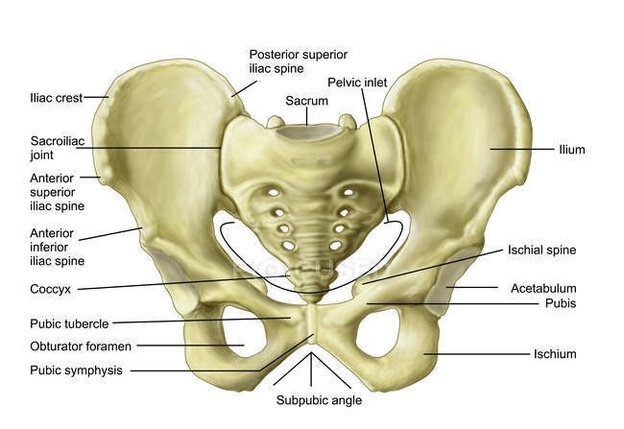The Human Pelvic Bone
The human pelvic bone, also known as the bony pelvis or hip girdle, is a basin-shaped complex of bones that serves multiple critical functions. It connects the trunk and the legs, supports and balances the trunk, and contains and supports various organs.
tructure
The pelvis consists of paired hip bones, connected in front at the pubic symphysis and behind by the sacrum. Each hip bone is made up of three bones: the ilium, ischium, and pubis. These three bones fuse together as we grow older.
– Ilium: The blade-shaped bone above and to either side, which accounts for the width of the hips.
– Ischium: Located behind and below, it bears the weight when sitting.
– Pubis: The bone in front.
All three unite in early adulthood at a triangular suture in the acetabulum, the cup-shaped socket that forms the hip joint with the head of the femur (thighbone).
Functions
The pelvis plays a crucial role in movement and stability. It provides attachment for muscles that balance and support the trunk and move the legs, the hips, and the trunk. The hip joint, a ball-and-socket joint created by the femur and a part of the pelvis called the acetabulum, allows for rotation in many angles, a key feature that enables humans to walk.
In females, the ring made by the pelvis functions as the birth canal. The male and female pelvises have some differences, with the male pelvic bones being smaller and narrower.
Development
In the human infant, the pelvis is narrow and nonsupportive. As the child begins walking, the pelvis broadens and tilts, the sacrum descends deeper into its articulation with the ilia, and the lumbar curve of the lower back develops.
Conclusion
The human pelvic bone is a remarkable structure, integral to various functions from movement and balance to the containment of vital organs. Its complex structure and development underscore the intricate design of the human body..


